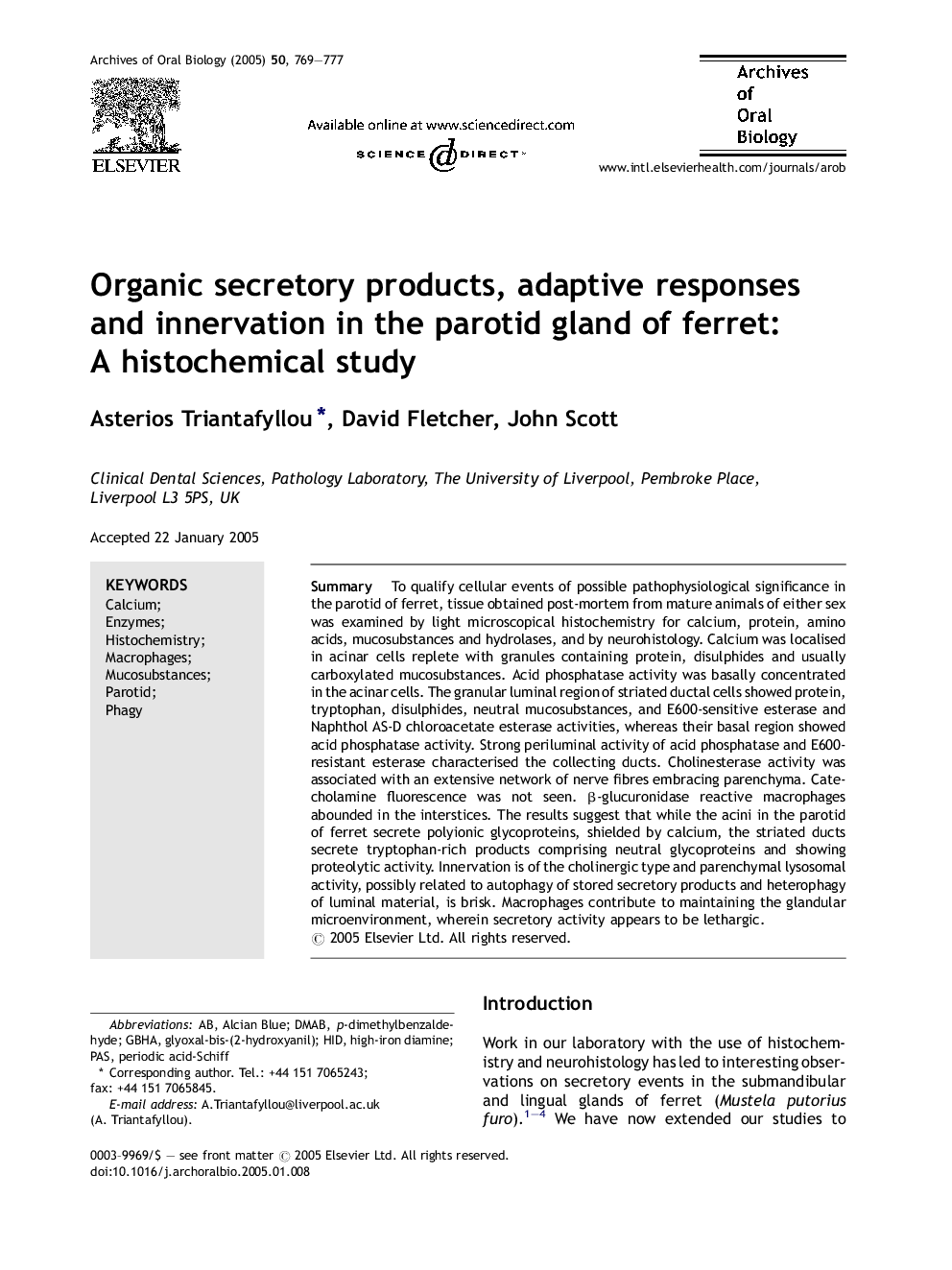| Article ID | Journal | Published Year | Pages | File Type |
|---|---|---|---|---|
| 9996653 | Archives of Oral Biology | 2005 | 9 Pages |
Abstract
To qualify cellular events of possible pathophysiological significance in the parotid of ferret, tissue obtained post-mortem from mature animals of either sex was examined by light microscopical histochemistry for calcium, protein, amino acids, mucosubstances and hydrolases, and by neurohistology. Calcium was localised in acinar cells replete with granules containing protein, disulphides and usually carboxylated mucosubstances. Acid phosphatase activity was basally concentrated in the acinar cells. The granular luminal region of striated ductal cells showed protein, tryptophan, disulphides, neutral mucosubstances, and E600-sensitive esterase and Naphthol AS-D chloroacetate esterase activities, whereas their basal region showed acid phosphatase activity. Strong periluminal activity of acid phosphatase and E600-resistant esterase characterised the collecting ducts. Cholinesterase activity was associated with an extensive network of nerve fibres embracing parenchyma. Catecholamine fluorescence was not seen. β-glucuronidase reactive macrophages abounded in the interstices. The results suggest that while the acini in the parotid of ferret secrete polyionic glycoproteins, shielded by calcium, the striated ducts secrete tryptophan-rich products comprising neutral glycoproteins and showing proteolytic activity. Innervation is of the cholinergic type and parenchymal lysosomal activity, possibly related to autophagy of stored secretory products and heterophagy of luminal material, is brisk. Macrophages contribute to maintaining the glandular microenvironment, wherein secretory activity appears to be lethargic.
Keywords
Related Topics
Health Sciences
Medicine and Dentistry
Dentistry, Oral Surgery and Medicine
Authors
Asterios Triantafyllou, David Fletcher, John Scott,
